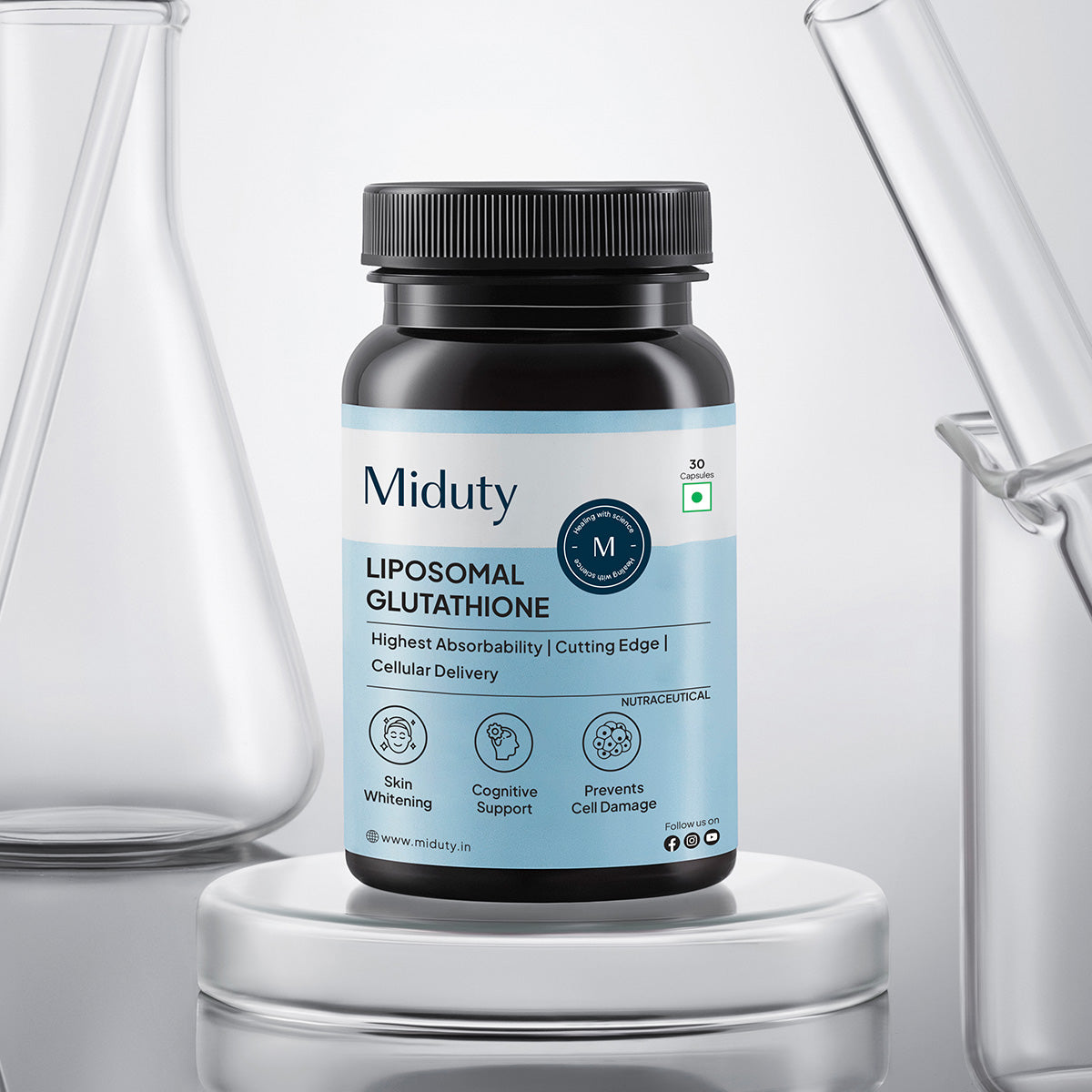
Yoga for Thyroid: Top 10 Yoga Asanas To Improve Your Thyroid Health
If you're living with thyroid issues, you know how draining and unpredictable the symptoms can be. Fatigue that hits without warning, sudden weight changes, mood swings, hair fall, dry skin, and brain fog can make each day feel like an uphill battle. Thyroid disorders often hide behind "normal-looking" symptoms, but their impact on your physical and emotional health is anything but small.
While medication and lifestyle adjustments are essential, many people overlook a natural tool that supports thyroid function from multiple angles: yoga. Yoga improves blood flow to the thyroid gland, balances hormones, reduces stress, supports metabolism, and calms the mind. Certain yoga asanas, especially those that gently compress or stretch the neck, can help stimulate and regulate thyroid activity.
Here are the top 10 yoga poses that can help support your thyroid health, along with simple steps on how to do them correctly.
Key Takeaways
1. Yoga supports thyroid health through circulation, hormones, and stress reduction. Specific yoga poses improve blood flow to the thyroid gland, help regulate hormones, and significantly reduce stress, which is one of the biggest factors behind thyroid imbalance.
2. Certain asanas directly stimulate the thyroid gland. Poses like Sarvangasana, Matsyasana, Ustrasana, and Halasana stretch or compress the neck area, promoting better thyroid function and supporting metabolism and energy levels.
3. Yoga helps relieve common thyroid symptoms. Regular practice can ease fatigue, mood swings, weight fluctuations, stiffness, poor sleep, and mental fog by calming the nervous system and enhancing circulation.
4. Consistency is more important than complexity. Even 15 minutes of daily practice can support thyroid health. Beginners can start slowly, prioritize proper breathing, and avoid overstraining the neck.
5. Stress management is central to thyroid recovery. Breathing practices like Anulom Vilom and restorative poses like Viparita Karani help lower cortisol, improve sleep, and create a supportive internal environment for better thyroid function.
Understanding the Thyroid and Yoga's Role
The thyroid gland, located at the base of the neck, is responsible for regulating metabolism, energy production, and hormonal balance. When it becomes underactive (hypothyroidism) or overactive (hyperthyroidism), your entire body feels the consequences. Yoga helps support thyroid health in several ways:
- Improves blood flow to the thyroid gland
- Stimulates hormonal balance
- Reduces stress, which is a major trigger for thyroid dysfunction
- Enhances metabolism and energy levels
- Improves posture and breathing, reducing tension around the neck area
Top 10 Yoga Asanas for Thyroid Health
1. Sarvangasana (Shoulder Stand)

Sarvangasana is considered one of the most beneficial yoga poses for the thyroid because it is an inversion that directs blood flow toward the throat region. This increased circulation nourishes the thyroid gland and may help regulate hormonal activity. The pose also strengthens the shoulders and improves respiratory function. Practicing it regularly can support better metabolism and reduce symptoms of fatigue. [1]
How to Do Sarvangasana: Step-by-step
- Lie flat on your back with arms beside your body.
- Lift your legs upward to a 90-degree angle.
- Use your hands to support your lower back as you lift your hips off the floor.
- Straighten your legs and keep your body aligned vertically.
- Keep your chin tucked slightly toward your chest.
- Hold for 20 to 30 seconds and release gently.
2. Matsyasana (Fish Pose)

Matsyasana is an excellent counter-stretch to Shoulder Stand and helps stimulate the thyroid by expanding the throat region. The deep chest opening allows more oxygen flow while stretching the front of the neck, where the thyroid resides. This pose can also improve posture, reduce neck stiffness, and support better respiratory function. [1]
How to Do Matsyasana: Step-by-step
- Lie on your back with legs extended.
- Slide your hands under your hips for support.
- Lift your chest upward while gently dropping your head back.
- Rest the crown of your head lightly on the floor.
- Keep your lower body relaxed and hold for 20 to 30 seconds.
3. Bhujangasana (Cobra Pose)

Bhujangasana activates the throat and chest area by lifting and opening the upper body. It improves blood flow to the thyroid and supports better spinal alignment. The gentle compression and extension in this pose can help stimulate the endocrine system. It is also incredibly beneficial for reducing stress, which often worsens thyroid symptoms. [1]
How to Do Bhujangasana: Step-by-step
- Lie on your stomach with palms under your shoulders.
- Press into your hands and lift your chest off the ground.
- Keep your elbows slightly bent and shoulders relaxed.
- Look forward or slightly upward without straining your neck.
- Hold for 20 to 30 seconds.
4. Setu Bandhasana (Bridge Pose)

Setu Bandhasana stretches the chest, neck, and spine while gently stimulating the thyroid through mild compression. It activates the parasympathetic nervous system, helping relieve stress and anxiety. The pose also improves circulation and enhances overall hormonal harmony.
How to Do Setu Bandhasana: Step-by-step
- Lie on your back with knees bent and feet hip-width apart.
- Lift your hips upward while pressing your feet into the floor.
- Keep your chest expanded and shoulders grounded.
- Bring your chin slightly toward your chest.
- Hold for 20 to 40 seconds and release slowly.
5. Halasana (Plow Pose)

Halasana provides a deep stretch to the spine while compressing the throat region, which can stimulate thyroid function. This pose also calms the nervous system, reduces anxiety, and supports better sleep – all of which play a role in thyroid balance.
How to Do Halasana: Step-by-step
- Start by lying on your back.
- Lift your legs up and over your head until your toes touch the floor behind you.
- Keep your hands supporting your lower back or rest them on the mat.
- Hold for 15 to 30 seconds.
6. Ustrasana (Camel Pose)

Ustrasana is a powerful backbend that fully stretches the throat, stimulating the thyroid gland. It opens the chest, improves posture, and increases lung capacity. This pose can be energizing, making it especially helpful for people struggling with fatigue due to hypothyroidism.
How to Do Ustrasana: Step-by-step
- Kneel on the floor with knees hip-width apart.
- Place your hands on your lower back or reach for your heels.
- Gently arch your back and lift your chest toward the ceiling.
- Drop your head back carefully without straining.
- Hold for 20 to 30 seconds.
7. Dhanurasana (Bow Pose)

Dhanurasana stretches the entire front body, including the neck and throat, promoting better thyroid function. The pose also stimulates the digestive organs, which is beneficial for those dealing with slow metabolism due to hypothyroidism. It helps improve flexibility and strengthens the spine.
How to Do Dhanurasana: Step-by-step
- Lie on your stomach and bend your knees.
- Reach back and hold your ankles.
- Lift your chest and thighs off the floor by pulling upward.
- Hold the pose for 15 to 25 seconds.
8. Viparita Karani (Legs Up the Wall Pose)

This gentle inversion is calming and restorative, making it ideal for reducing stress-related thyroid issues. It enhances blood flow to the upper body, improves circulation, lowers fatigue, and supports hormonal balance. It is safe for beginners and can be practiced daily.
How to Do Viparita Karani: Step-by-step
- Sit sideways next to a wall.
- Swing your legs up while lying on your back.
- Keep your hips as close to the wall as comfortable.
- Relax your arms by your sides and stay for 3 to 5 minutes.
9. Marjariasana–Bitilasana (Cat-Cow Pose)

This dynamic movement promotes flexibility in the spine and improves circulation in the neck region. The forward and backward motion gently stimulates the thyroid gland and helps reduce stiffness. It also releases tension from the shoulders and calms the nervous system.
How to Do Cat-Cow: Step-by-step
- Start on your hands and knees.
- Inhale and arch your back (Cow Pose).
- Exhale and round your spine (Cat Pose).
- Continue for 10 to 15 slow, controlled rounds.
10. Anulom Vilom (Alternate Nostril Breathing)

Although not a physical pose, this pranayama technique is extremely effective for balancing the endocrine system. It regulates the breath, reduces stress, supports hormonal function, and promotes mental clarity. Since the thyroid is sensitive to stress, Anulom Vilom can play a major role in managing symptoms.
How to Do Anulom Vilom: Step-by-step
- Sit comfortably with your spine straight.
- Close your right nostril with your thumb.
- Inhale through the left nostril.
- Switch and exhale through the right nostril.
- Repeat for 5 to 10 minutes.
Why Yoga Helps with Thyroid Health?
Stress plays a major role in triggering and worsening thyroid disorders because elevated cortisol levels interfere with thyroid hormone production, conversion, and absorption. Yoga helps counter these effects by activating the parasympathetic nervous system, which naturally reduces cortisol and promotes relaxation. Through deep breathing, mindful movement, and gentle stretches, yoga improves blood circulation, enhances oxygen flow, and stabilizes the endocrine system. It also supports better sleep quality, reduces anxiety, and balances mood, all of which are essential for thyroid health. Over time, this calming effect helps the thyroid function more efficiently and creates a more stable hormonal environment.
Tips for Practicing Yoga for Thyroid
1. Practice consistently, even if only for 15 minutes a day.
2. Focus on slow, mindful breathing.
3. Avoid pushing the neck beyond its comfort zone.
4. Combine yoga with a balanced diet and proper sleep.
5. Beginners should practice inversions under supervision.
Supplementation Support for Thyroid
Along with yoga and healthy lifestyle choices, targeted supplementation can provide valuable support for thyroid function. The thyroid relies on key minerals and adaptogenic herbs to regulate hormones, metabolism, and overall energy levels.
A thyroid supplement powered by Zinc, Selenium, KSM-66 Ashwagandha, Organic Sea Kelp, and Iodine offers a comprehensive approach to nourishing and balancing the thyroid. Zinc supports hormone production and immunity, while selenium aids in converting T4 into the active T3 hormone and protects the gland from oxidative stress. KSM-66 Ashwagandha helps manage stress and cortisol levels, which can directly impact thyroid health. Organic sea kelp provides natural iodine and trace minerals, and iodine itself is essential for proper hormone synthesis. Together, these ingredients help promote balanced hormones, improved energy, and overall thyroid wellness.
Conclusion
Living with thyroid issues can feel overwhelming, but yoga offers a gentle and holistic way to restore balance. The top 10 yoga asanas for thyroid health work by improving blood flow to the thyroid gland, supporting hormone regulation, and activating the throat area linked to metabolic function. These poses also help reduce stress—one of the biggest contributors to thyroid imbalance—by calming the nervous system and lowering cortisol levels.
Regular practice can boost energy, improve mood, support digestion, and assist with weight management, which are common challenges for those with thyroid conditions. Whether you're dealing with hypothyroidism, hyperthyroidism, or autoimmune issues like Hashimoto's, adding these asanas to your daily routine can be highly beneficial.
FAQ's on Yoga for Thyroid -
Q1 - Which yoga is best for thyroid?
Yoga poses that gently stimulate the neck and throat area such as Shoulder Stand (Sarvangasana), Fish Pose (Matsyasana), and Bridge Pose (Setu Bandhasana)—are widely considered the most supportive for thyroid function. Additionally, Cobra Pose (Bhujangasana) helps improve circulation in the neck, while Corpse Pose (Savasana) promotes deep relaxation, reducing stress that can affect thyroid health.
Q2 - Is yoga safe for all thyroid conditions?
No, yoga is not safe for all thyroid conditions and is not a substitute for medical treatment. It is a complementary therapy that can help manage symptoms and support overall well-being, but individuals with a thyroid condition must first consult with their doctor to determine if yoga is appropriate for them and to ensure they are not doing any poses that could be harmful, especially with uncontrolled hyperthyroidism.
Q3 - What neck exercises help the thyroid?
Neck exercises such as yoga poses like Cat-Cow and Cobra, along with gentle stretches like chin-to-chest and ear-to-shoulder, may support thyroid health by improving circulation and lightly stimulating the gland. Additional movements like shoulder shrugs and exercises that engage the neck and shoulder muscles can also be helpful. As always, consult a healthcare professional before beginning any new exercise routine.
Q4 - What chakra is connected to the thyroid?
The thyroid is closely linked to the Vishuddha, or throat chakra, which is the fifth primary chakra in yogic philosophy. This energy center governs communication, self-expression, truth, and authenticity. Because the throat chakra is located in the same area as the thyroid gland, a balanced Vishuddha chakra is believed to support healthy thyroid function and overall energetic harmony.
Q5 - How does yoga affect the thyroid?
Yoga affects the thyroid by improving overall endocrine function through specific poses and breathing techniques, reducing stress which impacts the thyroid, and helping to manage symptoms associated with thyroid disorders. It is considered a complementary therapy to be used alongside medical treatment, not a replacement for it.
Q6 - How long until I see yoga benefits for thyroid?
You may notice initial benefits like reduced stress and improved energy within a few weeks, with more significant biochemical improvements like lower TSH levels and BMI appearing in studies after 1 to 3 months of consistent practice. However, the timeline varies, and consistent practice is key to seeing results.
Q7 - What exercises should I avoid with thyroid issues?
You should avoid high-intensity workouts and overtraining if you have thyroid issues, as excessive physical stress can disrupt thyroid hormone levels and, in cases of uncontrolled hyperthyroidism, may even strain the heart. Instead, choose low-impact activities such as walking, yoga, or swimming, and pay close attention to your energy levels and heart rate to ensure you're exercising safely.
References
| Sr. No. | Reference Links |
| 1. | Scientific yoga module for hypothyroidism: A study protocol for tele-yoga RCT☆ |











